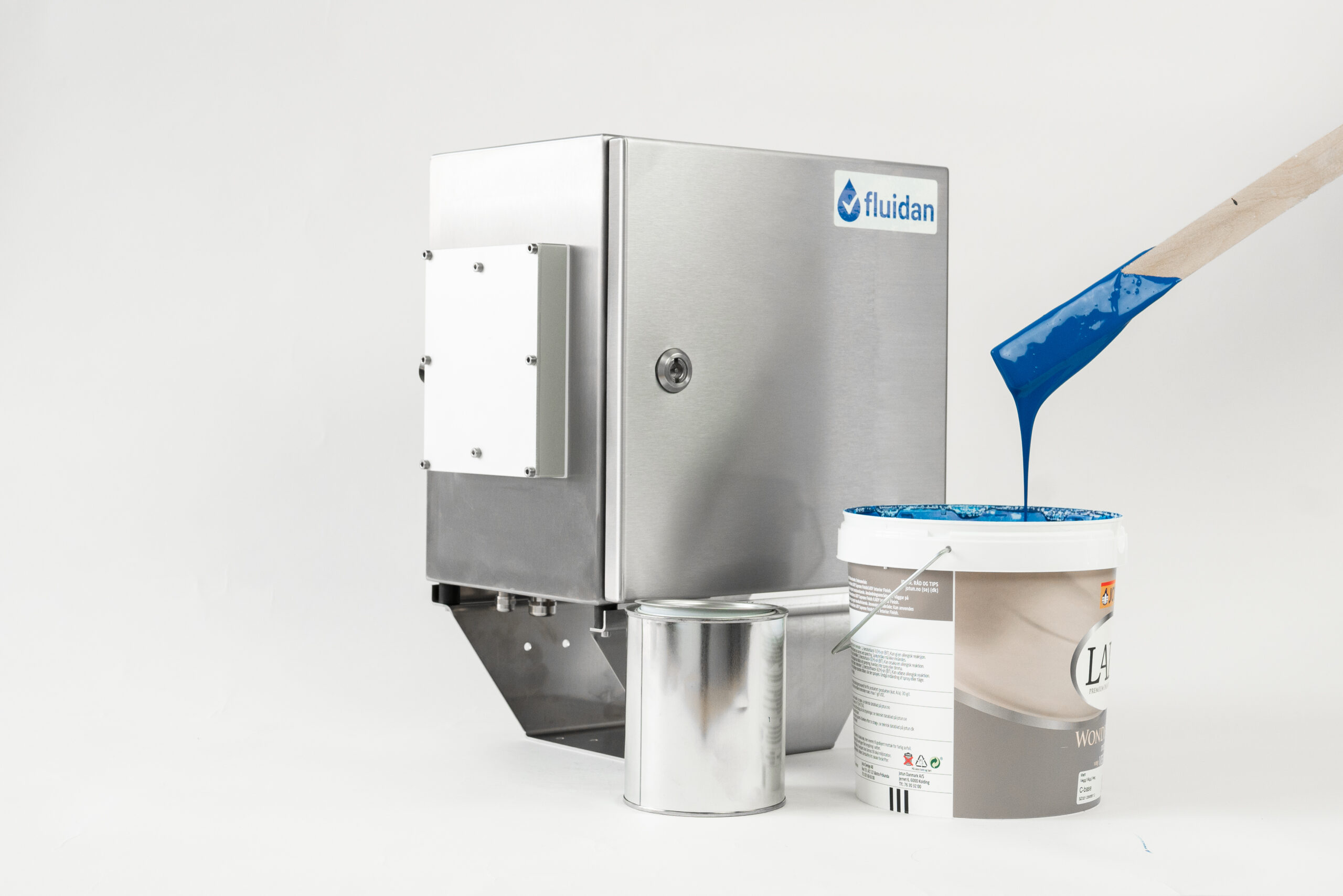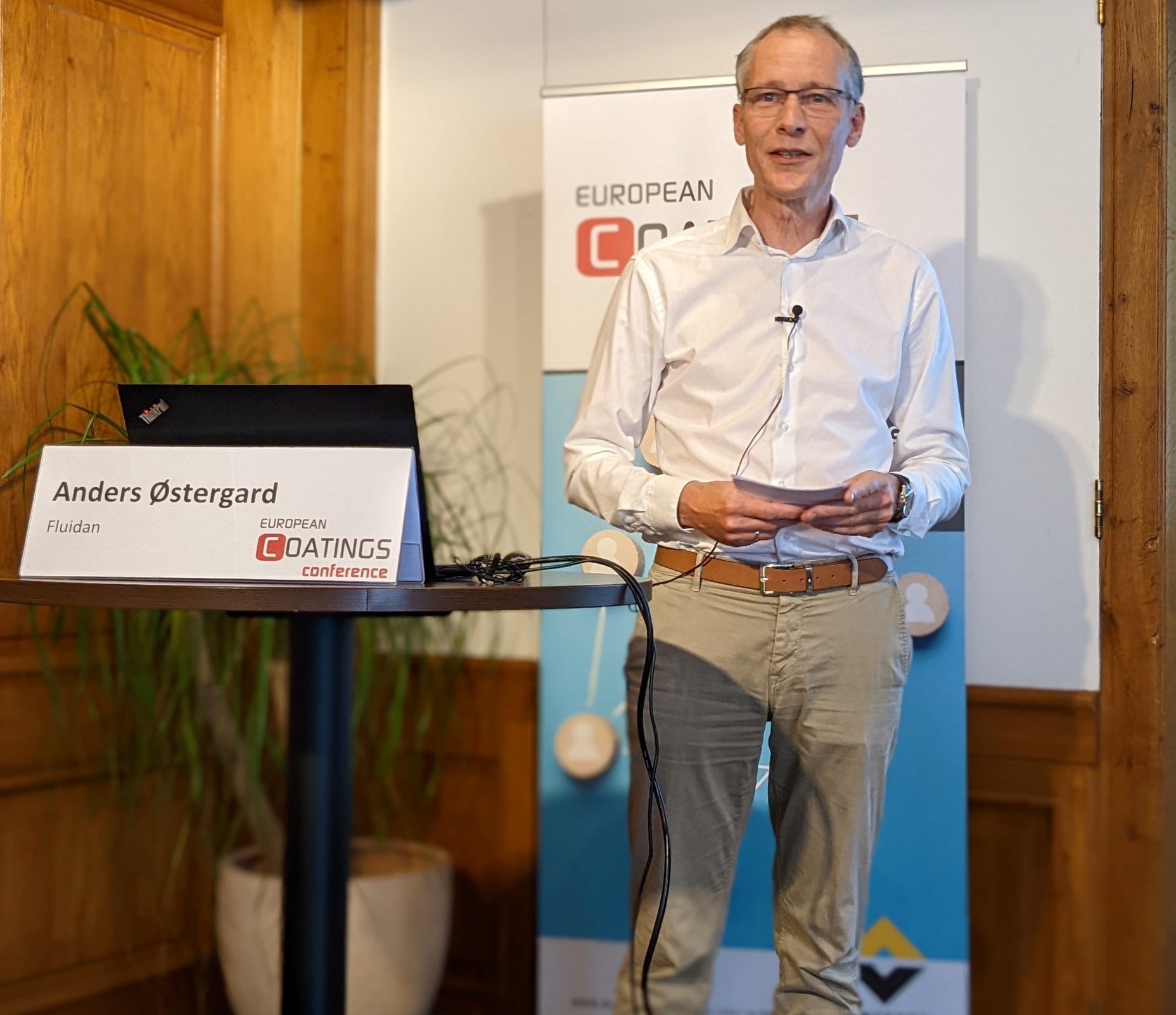Automate or Die
The keynote at European Coatings Conference Automation this week (Wolfram Keller) left no doubts: Automate or die! When demands for productivity, flexibility and sustainability are increasing, the old-school way of doing product development and operating the production, will not meet the requirements.
And as clearly stated in another presentation (Mike Bach): You cannot do good automation without excellent digitalization.
With these clear statements, the scene was set for Fluidan presenting the latest – and hottest? – in digitalization: RheoStream® for process control of viscosity in paints and coatings.
From a daily hassle to an optimization parameter
Most operations in the manufacture of paints can be automated. But as stated above, there is no automation without digitalization.
To automate viscosity control it is necessary to
- Measure viscosity in the process, fast and automatic, and interfacing the data into a control system, and to
- Establish a “loop” where the control of adjustments (e.g., addition of water) is based on the process measurements of viscosity.
Viscosity measured in a cup or with a simple off-line viscometer does not give digital inputs to process control. A good QC rheometer gives digital outputs, but still, it happens “after the fact”, not in the process.
RheoStream is the only process rheometer that can correctly measure viscosity of shear thinning fluids, such as paints. Read all about that here:
With RheoStream viscosity becomes digital! An input to automation and control. Now, some paint manufacturers may not yet be at a point where all knowledge about viscosity adjustments can be digitalized. They will still rely on expert assessments by skilled technicians and operators. But even so, automated and continuous viscosity measurement saves time and resources, and gives a completely new level of understanding of the mixing process.
In fact, a recent cost:benefit study at a manufacturer of wood protection demonstrated that the overall production time can be reduced by 35%, just by automating the viscosity analysis in the process.


Bottom line, with RheoStream, rather than viscosity control being a daily struggle, viscosity can now be a parameter entering the digitally based optimization efforts.
The presentation of RheoStream @ ECC Automation created significant interest among the participants, and several ideas for applications surfaced in the discussions.
Until now, Fluidan has mainly focused on automating the manufacture of paints and coatings. However, RheoStream can be valuable in controlling printing inks, both in the manufacture and in the applications. Another obvious application is the application of automotive coatings.
The Connected Industry and the automated Product Development Lab
A broad palette of presentations painted the picture of an industry on the move, but also and industry that is coming a bit late to the party. The per-person productivity in the paint industry is only 75% of the average in the chemical industry, in terms of revenue creation. Some industries have established shared databases allowing the players to share ingredient data etc. And the vision was clearly painted of a future in which information is flowing more freely along the value chain, rather than being kept in silos and away from competitors.
Automating repetitive processes in product development featured prominently. Product Development in essence means formulation and process development. The possible ingredient choices and combinations are infinite, and many more combinations can be studied in automated equipment. Even more inspiring were the ideas of more “intelligent” formulation work, based on fundamental properties of the ingredients (Sander van Loon), or built on an evolutionary approach using neural networks and AI (Erik Sapper).
Sure, there will be exiting developments and opportunities to talk about also in the coming years.

